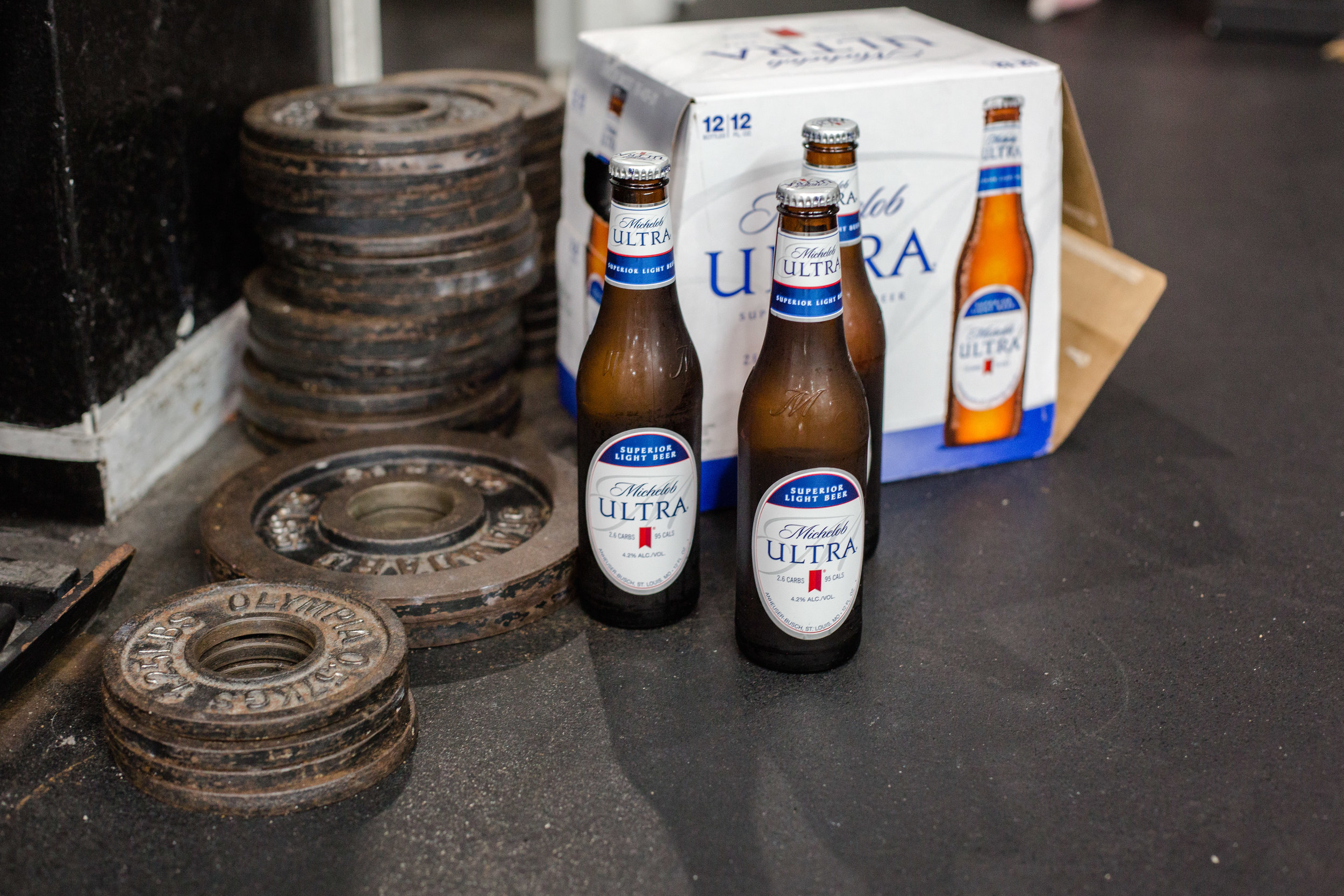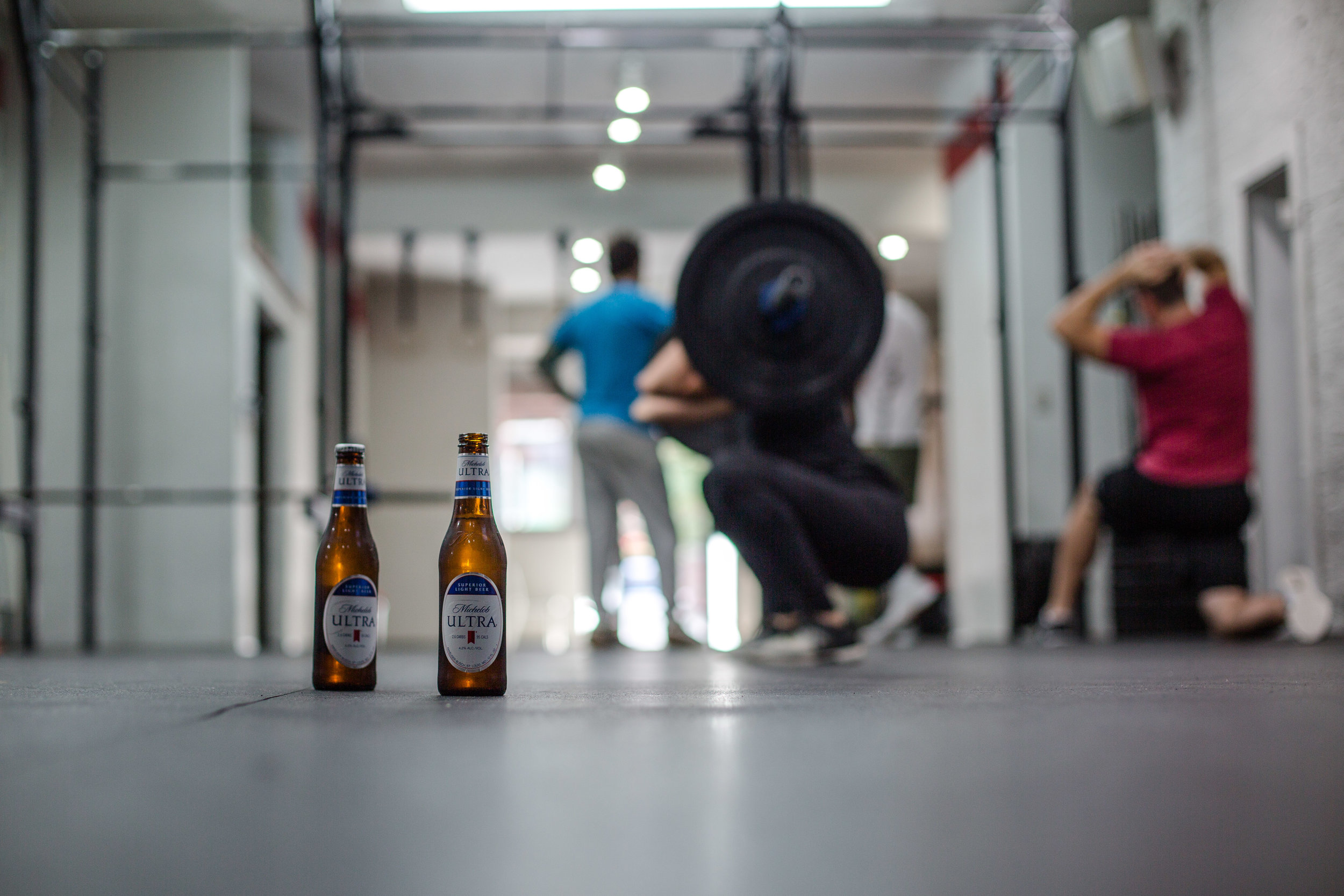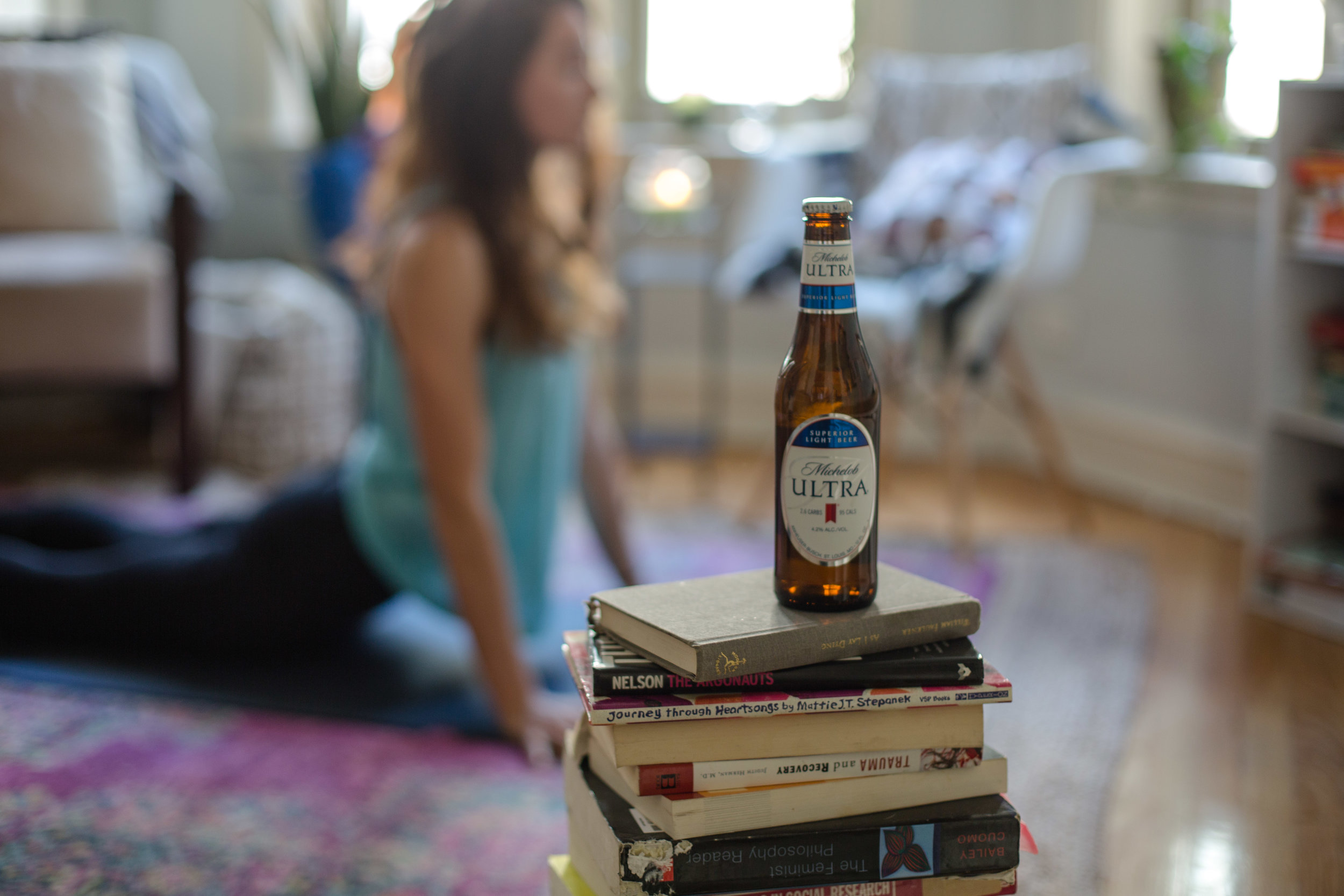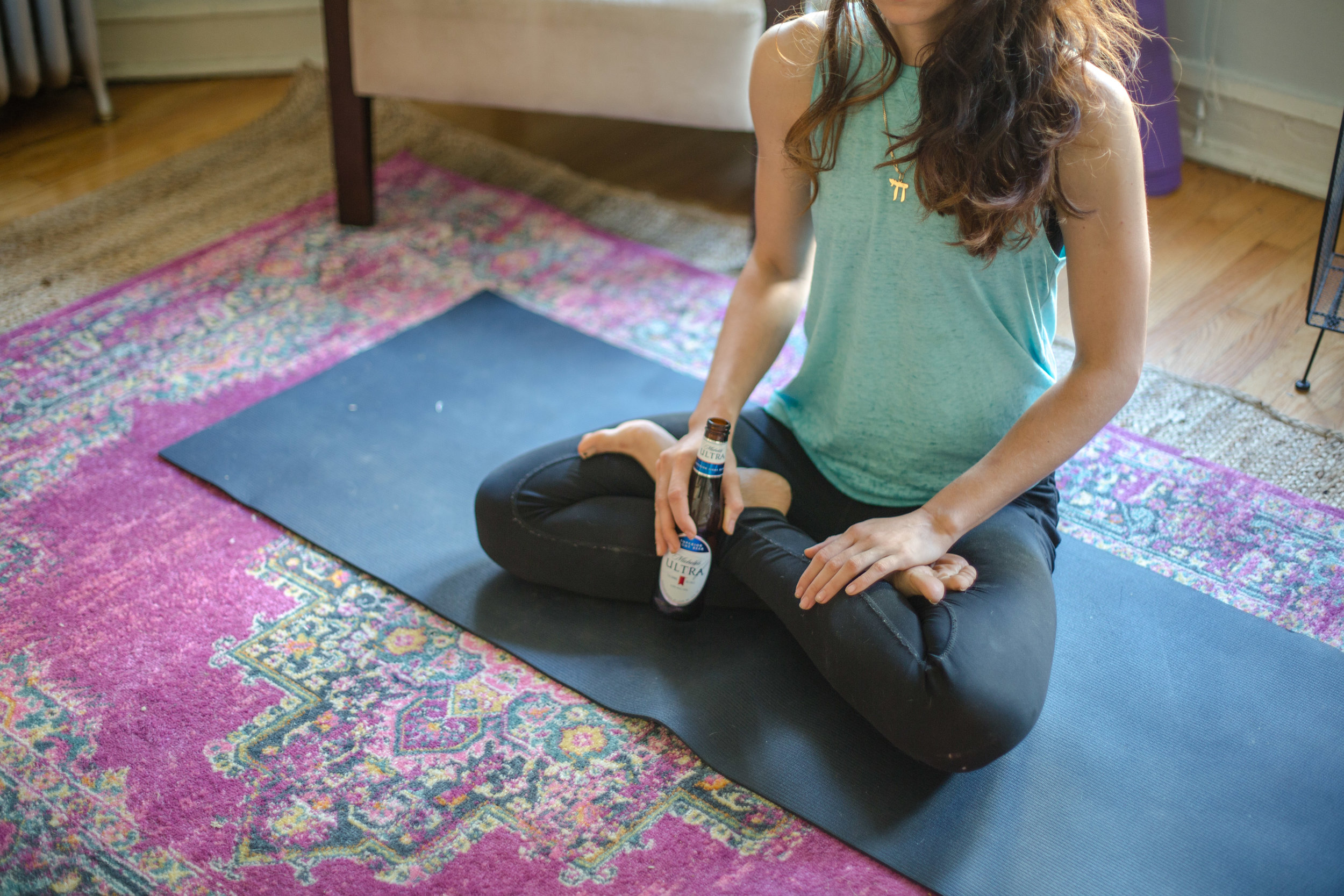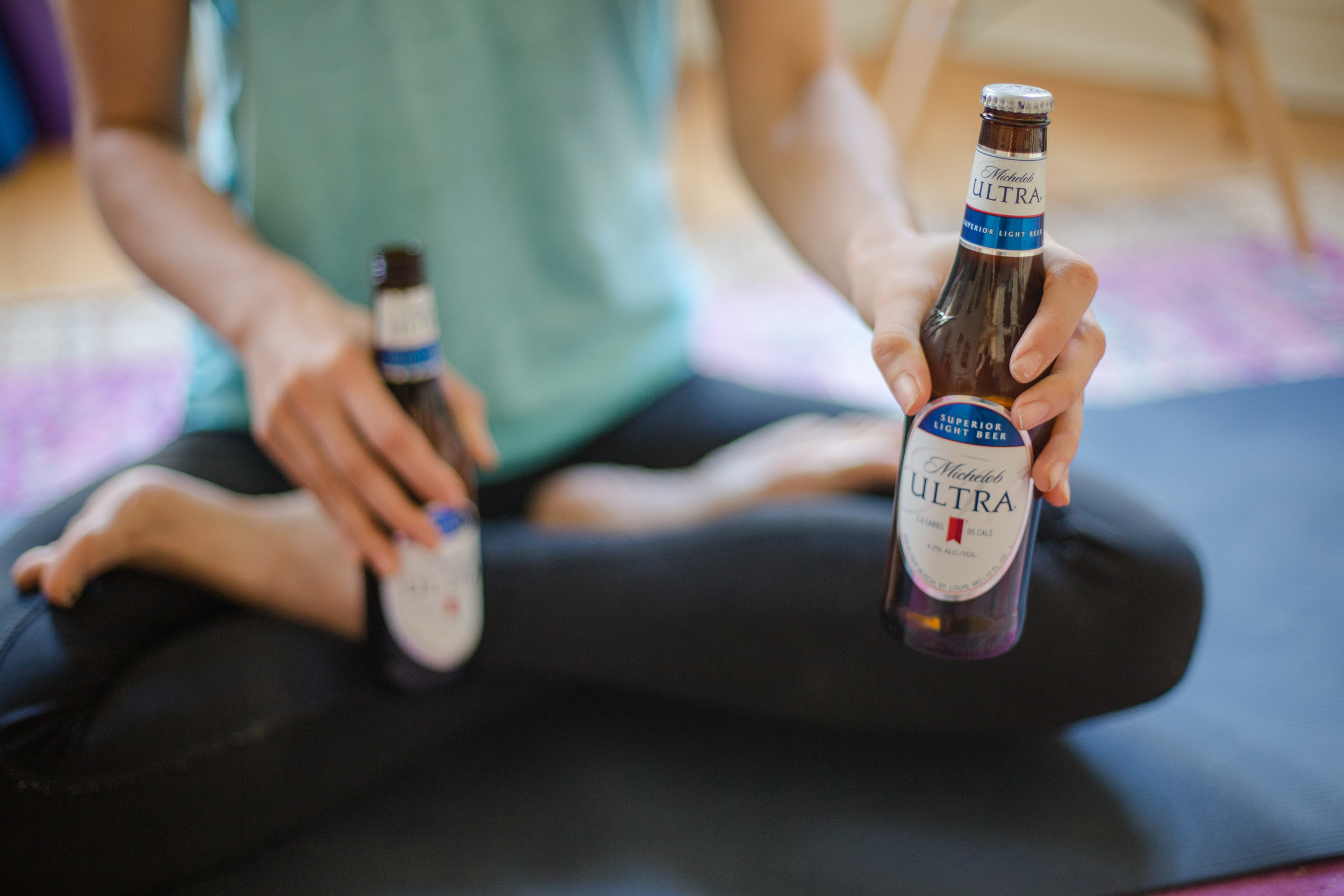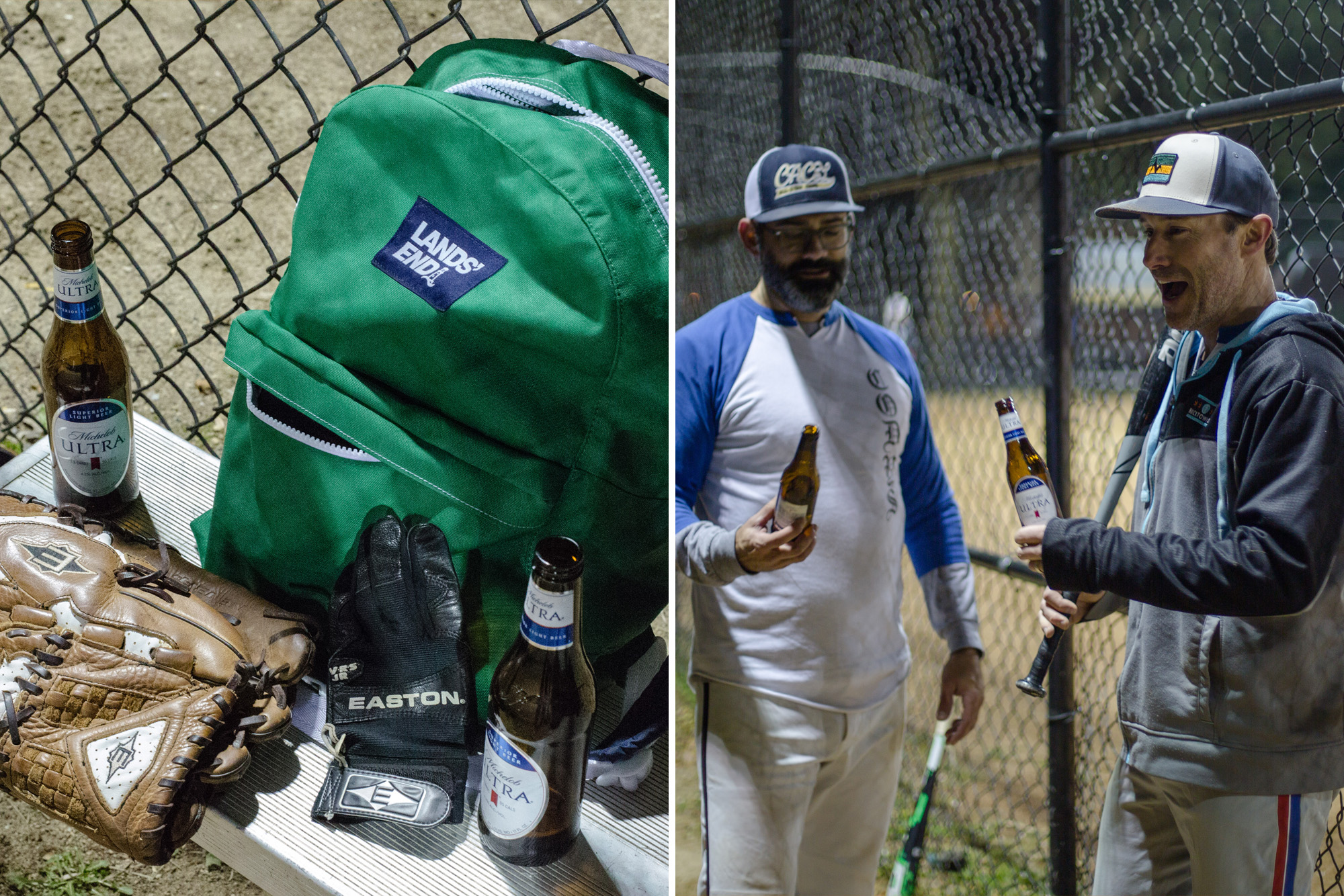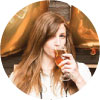“I’m yet to find a guy that’s insanely in shape that drinks IPAs or other craft beer,” says Chris Smith, an occasional beer drinker with a regular workout plan. “At least it’s not very common.”
It is, of course, a broad generality, but meant to cut straight to a specific point. Smith, who is mindful of his health and wellness on a daily basis, is a consistent customer for Michelob Ultra, one of the most popular beers in the U.S. During the summer, Smith says he’ll buy a six-pack of Ultra every week or two, typically stocking it in his fridge with hard seltzer and some Corona.
“It kind of caters to people who have a more active lifestyle,” adds Smith, a resident of Macedon, New York. “When they’re thinking more about their physique and performance.”
Smith is a relatively new customer for Michelob Ultra, having been introduced to it a little over a year ago by his neighbor, Cody Goodfriend, who’s been drinking the beer for a decade. Goodfriend is a blue belt in jiu-jitsu and does a mix of martial arts and weight training, working out no fewer than two days a week. Smith is in the gym at least four days. From a marketing standpoint, these two Millennial, suburban men are a perfect demographic for the brand.
“I like how refreshing it is and that it doesn’t have any fruit flavors, so when you want a crisp, carbonated beverage, you almost feel like you’re hydrating as you drink it,” Goodfriend says.
If the narrator of this story was Ron Howard, he’d quickly add, “You aren’t.” And yet, the narrative is spot-on. Beer enthusiasts may scoff at the brand—and they do across RateBeer (1.13/5), BeerAdvocate (1.9/5) and Untappd (2.38/5)—but the average American drinker is increasingly attracted to the low-carb and low-calorie beer. At 2.6 grams of carbohydrates and 95 calories, it’s lower on both than the country’s best selling beer, Bud Light, which sits at 6.6 grams and 110 calories per serving.
The combination of all these things is undeniable. As craft beer continues to rise and Megabrew brands slowly lose ground, Michelob Ultra is setting its own pace as the fastest-growing domestic beer in the country—and something of a savior for declining brands of parent company Anheuser-Busch InBev. It has become so popular, Ultra has essentially created its own untouchable sub-segment. With slight hyperbole, but the numbers to back it up, Michelob Ultra is a once-in-a-generation beer, arguably the most important American brand since Miller Lite and Bud Light debuted around 40 years ago.
“Honestly,” says JR Hand, president and CEO of Hand Family Companies, which oversees five different distributor business locations in Illinois, Kentucky, and Tennessee. “I really believe,” he pauses again, not for dramatic effect, but because of the clear weight of what he’s trying to verbalize.
“It would not surprise me that much if Michelob Ultra becomes the second or third biggest brand in the country,” he concludes.
Bud Light, far and away the best selling beer in America, is essentially untouchable from a volume perspective. In 2017, in IRI-tracked grocery, convenience, and other stores alone, it outsold #2 Coors Light and #3 Miller Lite combined, plus nearly 56 million case equivalents on top of that. But all three of those brands are in attrition, so while Bud Light has such a far lead on any rival it can’t be supplanted, top-three status for Michelob Ultra isn’t out of the question.
By volume growth alone in IRI channels, Coors Light, Miller Lite, and the fourth best-selling beer, Budweiser, are all trying to tread water. Ultra, meanwhile, is gaining quickly in a marathon to top status. From 2012-2017, those three brands have collectively lost about 25 million case equivalents in IRI channels. Michelob Ultra, meanwhile, has picked up about 33 million.
That's just in raw totals, however. The year-to-year growth in percentage is what really showcases the kind of power lift Ultra is performing. In the last full five calendar years, Ultra has averaged 16% year-to-year growth. Budweiser has averaged a drop of 3.2% per year while Coors Light and Miller Lite have essentially stayed flat.
“It’s on a similar trajectory to Bud Light,” Hand says. “It was this historic rise of the brand when [Bud Light] came from a relatively small inception in 1982 and in the ‘90s, hit this explosion. Ultra was much more successful out of the chute, but when you look at growth rate and ability to continue to grow, it’s crazy to see that it still looks underdistributed and underspaced in a lot of stores.”
In 2017, Michelob Ultra sold three times as much volume in IRI-tracked stores as Samuel Adams, Sierra Nevada, and New Belgium portfolios combined. Through nine months of 2018, it wasn’t too far from four times as much.
“The funniest part about this is something I always tell everybody,” Hand says. “It’s the most successful failure in the beer industry.”
Michelob Ultra was supposed to be for Baby Boomers, not 20- and 30-something Iron Man competitors. Launched in 2002 in test markets designated to maximize exposure to an older generation, Michelob Ultra began in Denver, Tucson, Arizona, and Fort Myers, Florida—areas targeted for 50-plus adults and “snowbird” populations of seasonal residents. Just as strong in its marketing push, the brand was bolstered by a focused tagline—“Lose the carbs. Not the taste.”—during a peak of the Atkins craze. At the time, just more than a quarter of Americans—nearly 72 million people—were estimated by Gallup polling to be “avoiding carbohydrates” due to the fad diet that focused on protein and fat.
Not long after the turn to the 2000s, August Busch III reportedly was the one who initially asked for such a beer, telling Anheuser-Busch’s leadership teams to create something to test with retirees in Florida. "He was saying, ‘Is there a beer product out there we can develop for an older lifestyle and keep Atkins in mind?'" Bob Lachky, then Anheuser-Busch’s vice president for brand management and director of global brand creative, told AdAge.
At the time, John Ufheil, vice president of Daytona Beach distributor Daytona Beverages LLC, told The Wall Street Journal he expected it to be a hit. "Carbs seem to be the buzz right now if you want to be health conscious. That it doesn't taste like water is a plus." In less than two years, Ultra became the fastest-growing product in A-B’s history. It sold 2.5 million barrels in its first full year, which would put it between production levels of Boston Beer Co. and Yuengling, the two largest, Brewers Association-defined craft brewers in the country.
But its growth wasn’t coming from the intended audience.
Being an ABI product, Michelob Ultra benefited from the kind of marketing budget and distribution network other brewers could only dream of, but the brand missed its mark. Early on in its launch, as TV ads rolled out across the country, it was 21-to-27-year-olds that started driving sales, not their parents. By 2004, marketing had changed to showcase younger people in the commercials with a focus on women. The New York Times reported that 37% of Ultra drinkers were women at the time, 16% higher than what was being tracked for all of beer.
It was the perfect beer at the perfect time to tap into a unique attribute of the American psyche—one that wants to be healthy, but may not be willing to take drastic steps to achieve those goals. In a decades-long survey by Gallup, a historical high of 62% of respondents indicated they wanted to lose weight in 2004, but less than half that (29%) said they were seriously trying to do so. The situation continues today, with 56% saying they want to drop pounds, but only 26% indicating it’s a serious goal.
If you want to take on a “healthier” lifestyle but don’t want to give up your habits, it’s easy to imagine consumers thinking a change in a beer’s contents will help them achieve their goals. But the beauty of Ultra, it seems, is it’s a feel-good product whether you do or don’t. Marathoners and weekend warriors alike are responsible for its massive success.
In a 2013 paper researching the sale of "ultra-light beers" in the early and mid-2000s, Anheuser-Busch's creation stood out. Despite a flood of similar products that arrived after Ultra—the company's own Bud Select, MillerCoors' Aspen Edge, and MGD 64—none could dethrone it. According to estimates based on analysis of IRI sales data, researchers from the University of North Carolina-Greensboro found that in an unnamed market, 74% of Michelob Ultra sales in 2003 came from new drinkers who would not have purchased beer or other alcohol in the absence of the brand.
This is a big reason that, for more than a decade, Michelob Ultra has been a mandated brand to carry at national franchise locations of Buffalo Wild Wings. Cranking out more than 42 million chicken wings a week creates lots of thirsty customers. Bud Light, Miller Lite, Coors Light, and Blue Moon are the top four brands across corporate restaurants (Buffalo Wild Wings also supports individually-owned franchise locations), but Michelob Ultra has held down fifth place for years, slowly cannibalizing share from others. This year it has so far picked up 0.7% of total beer share at BWW corporate locations, now sitting at 7.2%.
"It's such a workhorse, there's not a replaceable product for it," says Jason Murphy, manager of BWW’s beverage product innovation. "There isn't an option where I could take Michelob Ultra off and just be able to substitute it."
Murphy and his colleague, Andrea Schwenk, director of beverage for Buffalo Wild Wings, both say that the combination of Michelob Ultra focusing on its functional benefits (carbs and calories) and adhering to its place as a lifestyle brand for drinkers who are active or considerate of their intake can’t be beat.
“There are other copycat brands that are trying to take a piece of its share, but Michelob Ultra has done a great job being a market leader,” Schwenk says.
“I can’t think of another brand on draft that mimics what Michelob Ultra does for us in our restaurants,” Murphy adds.
Ultra’s continued growth in 2018 has been in spite of a price change at national BWW restaurants: the company removed it from its “Beer of the Month” program, where it received discounts between 75 cents and $1 for one-to-two months of the year. Outside of happy hour specials, the regular price sits between $4.75 and $5.50 for the majority of restaurants as a 22-ounce pour and $4 to $4.75 for a pint.
“There’s a segment of guests looking for whatever is the best value and it doesn’t matter what the product is,” Murphy says. “But we haven’t seen that with Michelob Ultra.”
Off-premise, the brand still has as much firepower. Hand, the president and CEO of a series of distributors, says Ultra is growing around 50% year-to-year in Chicago, one of the most competitive beer marketplaces in the country. It grew almost 150% among the area’s Latino market last year, a segment cited often for its potential to grow the beer category.
“The brand has such a wide set,” he adds, “it’s socially acceptable to everyone, everywhere.”
It’d be impossible to tout the wide-ranging success of Michelob Ultra and its ability to find customers all over without acknowledging its powerful backing in advertising. Only the biggest brands from the biggest companies can sponsor more than 100 events annually or get the kind of airtime and attention Ultra does, from ad spends above $50 million annually to Super Bowl commercials starring world-famous actor Chris Pratt. On the other hand, the only brands that can compete with that just so happen to be the ones Ultra is beating in growth annually.
Imitators like Corona Premier (2.6 grams of carbs, 90 calories) are coming for its lunch, which has led to Michelob Ultra Pure Gold, clocking in at 2.5 grams of carbs and 85 calories, 10 fewer than the original brand. In the first half of 2018, Pure Gold sold more in IRI-tracked stores than some of the fastest-growing craft brands like Elysian Space Dust IPA, and more than entire brewery portfolios from companies like New Glarus and Ballast Point.
There’s no denying that marketing and distribution factor into Ultra’s unfathomed success, but it’s just as impossible to ignore the fact that just like Bud Light, Coors Light, and Miller Lite, all of which have amassed millions of dedicated followers, people genuinely love the low-carb, low-calorie beer.
“I’m not an IPA or hobby beer lover, so Mich Ultra is one of my faves,” says Karen Werme, a Philadelphia resident and member of the city’s Fishtown Beer Runners club. She drinks Ultra almost daily and it’s her go-to for "any occasion there's alcohol, pretty much." She runs about 20 miles a week and found Michelob Ultra to align with her lifestyle and interests, repeatedly mentioning an appreciation for the “refreshing taste.” She's been a regular customer for a decade.
“It’s important for me to consider calories in the beer I drink because I do drink a lot of beer,” she says. “I’m almost 40, so it’s very easy to put on weight as my metabolism slows down.”
Of all the ways to quantify the success of Michelob Ultra so far, there’s still one staggering statistic. According to Azania Andrews, the vice president of marketing for the brand, Ultra sits about 20 “awareness points” below its direct competitors. It’s a way to mathematically gauge a brand’s penetration into consumer minds and culture—essentially a number to show how popular something is with shoppers. She notes that ABI’s leading brands—Budweiser and Bud Light—sit in the 90s, similar for a competitor like Coors Light. “But we’re only 15 years old versus more than 100 for Bud.” It’s another interesting factor when you consider that Ultra has done nothing but grow, including more than four years as the fastest-growing domestic beer brand.
“There’s this nexus of being a product that’s really relevant to something happening in culture and we think that’s going to continue being a big part of fueling its success,” Andrews says. “People are looking to make better choices and feel more balanced in their lives.”
This is already playing out in areas of non-alcoholic beer, the rise of hard seltzers, and daily consumer products at convenience and grocery stores, where shoppers are buying less soda and more “enhanced” water.
“It’s a beer marketed toward people that want to have a good time and are easy going, but also care about our health,” says Chris Smith, the Macedon, New York resident who became a Michelob Ultra convert a year ago. “It’s definitely a category of person I’m in.”
Smith and his neighbor, Cody Goodfriend, present the ideal base drinker for Ultra, one that has helped the brand grow by leaps and bounds. Both see the active part of their lifestyle align ideally with what Michelob Ultra sells, but like tens of millions of other Americans, they’re also just increasingly conscious of what’s going in their bodies.
“I’ve become more disciplined about my diet,” Smith says, “which made it easier to integrate [Michelob Ultra] into it.”
Becoming a “lifestyle brand” is a goal so many products hope to achieve, so fully integrated into purchase decisions it’s a natural extension of behavior. Big Beer has long used this, including AB InBev’s other mainstream products, but it’s something sought after by craft brewers like Oskar Blues or new entrants like Sea Quest Brewing. Michelob Ultra has achieved this status in record fashion, and while it’s not the most exciting brand for line-waiting enthusiasts, its connection to average drinkers has set a growth pace unlike the industry has seen in years.
Fittingly, it’s a runaway hit.
